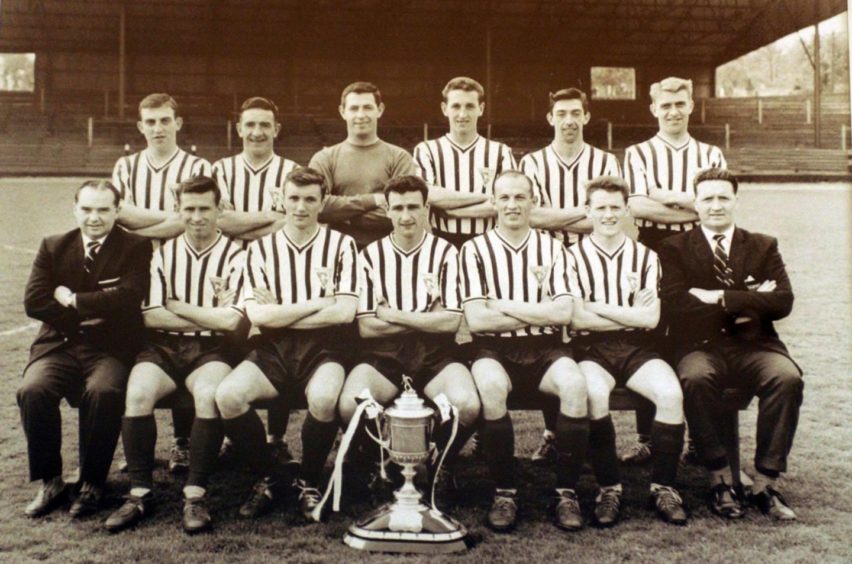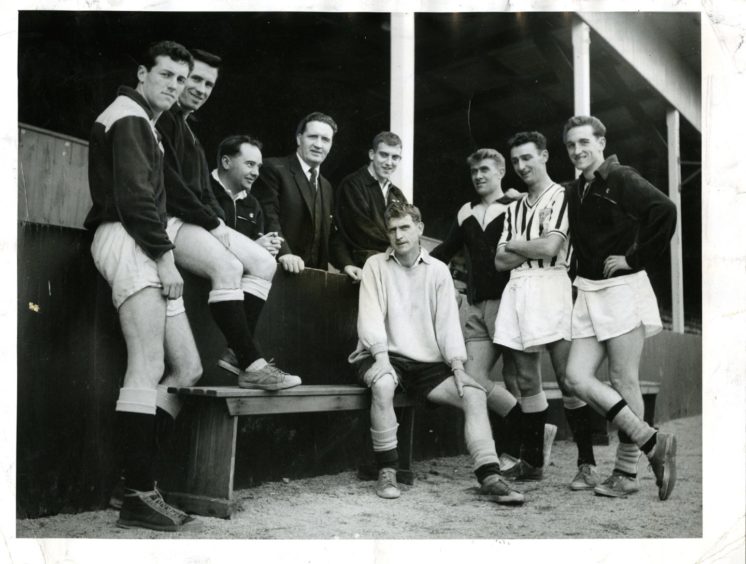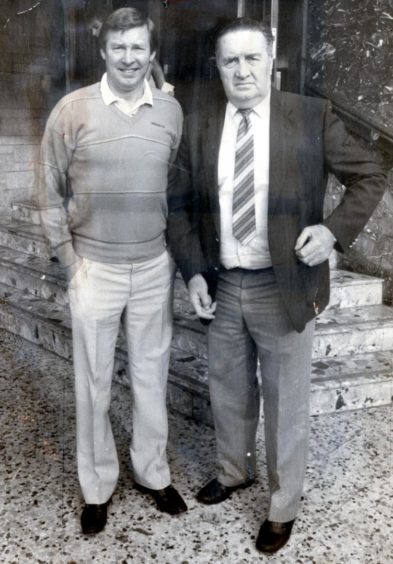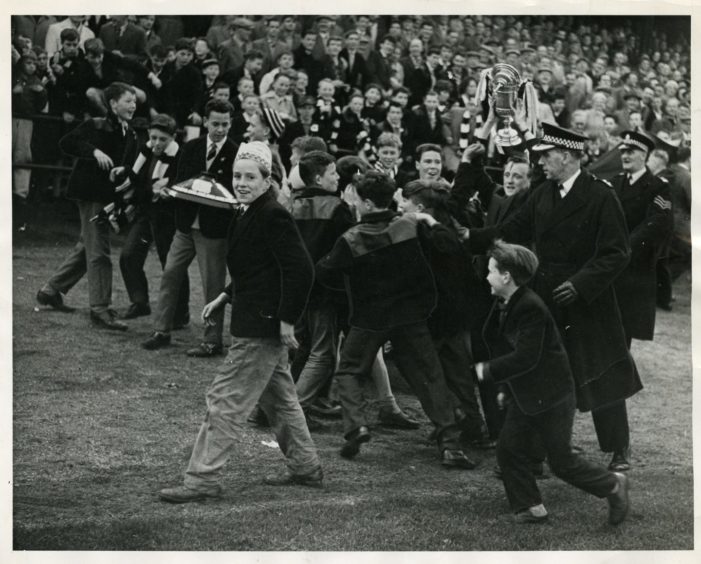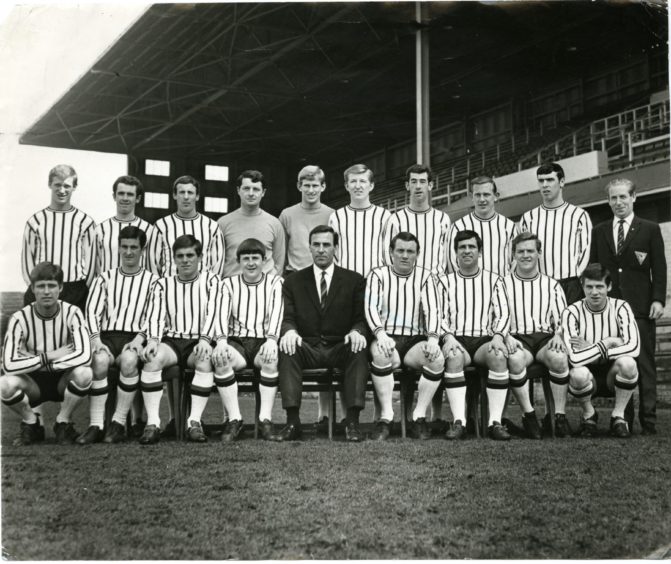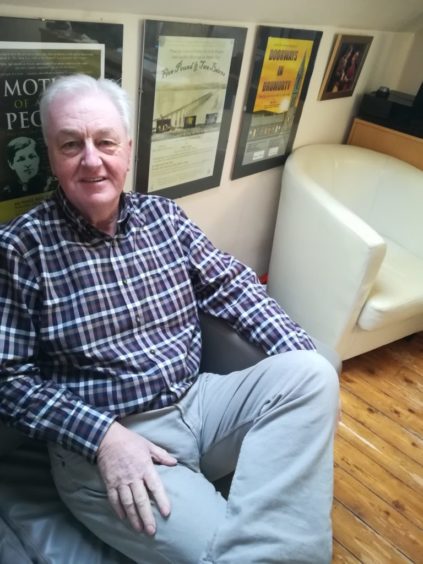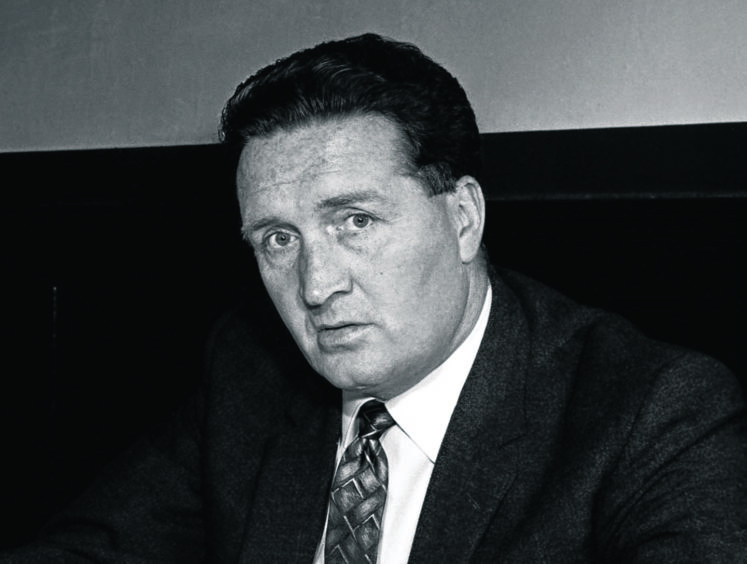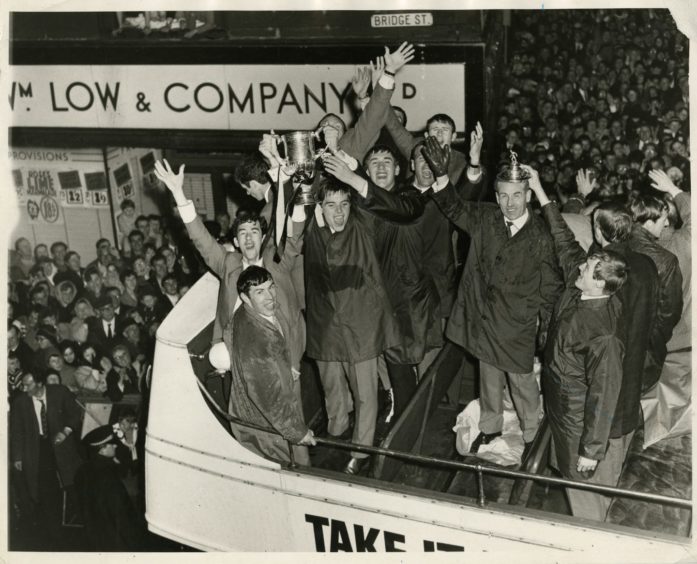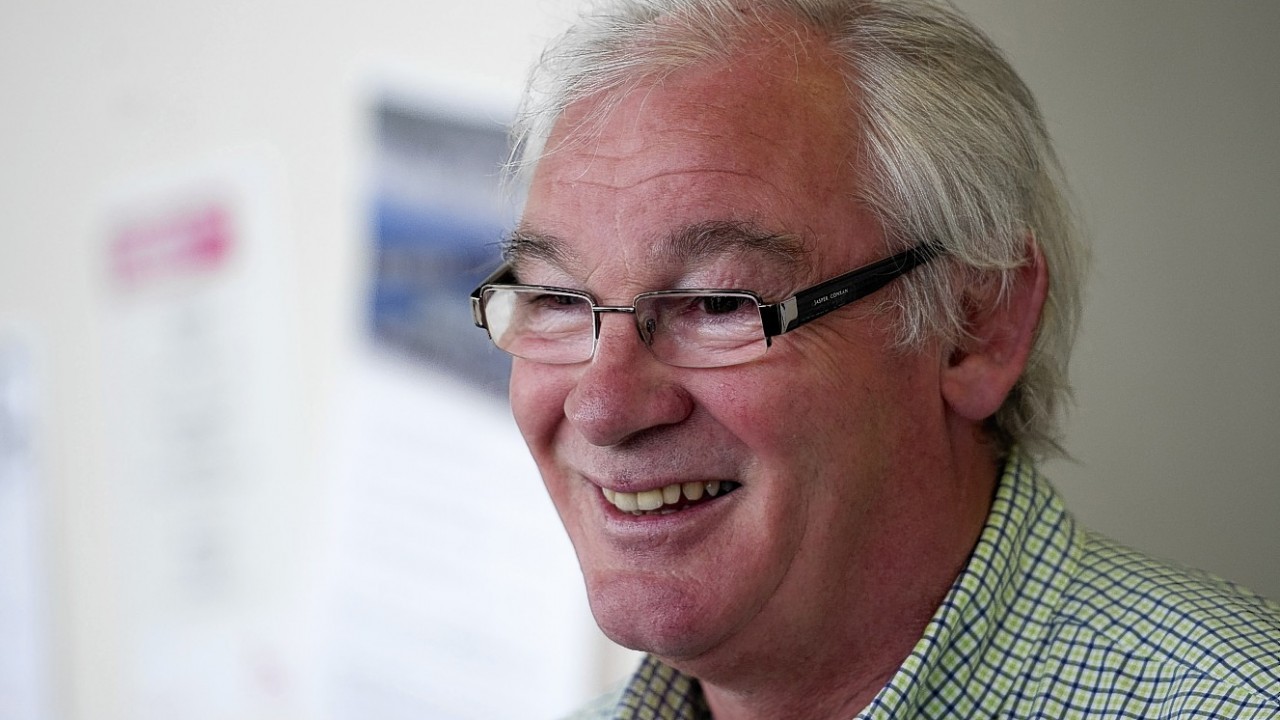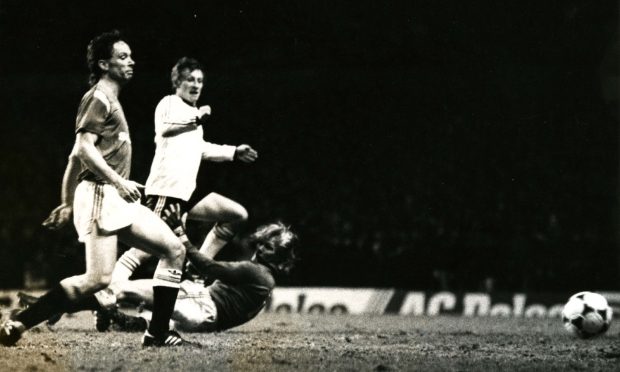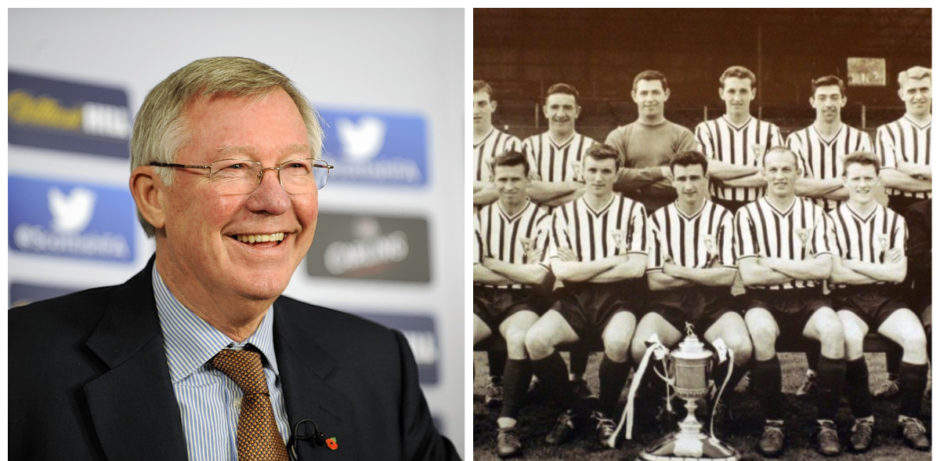
It is the Eastenders soap opera set in Scotland with a compelling storyline, encompassing triumph and tragedy. And now, Sir Alex Ferguson has talked about his affection for Dunfermline Athletic.
The former Aberdeen and Manchester United boss has written a poignant foreword to a new book about the Heroes of Halbeath Road, who have become stalwart figures at the club and elsewhere since the 1960s.
Long before the likes of Fergie and Jock Stein were cementing their places in the pantheon of world football’s legendary figures, they immersed themselves in the culture at East End Park.
Acclaimed author Mike Gibb, an aficionado of the Fife team for decades, has created the new work about a serried group of the most renowned Dunfermline stalwarts.
The resurgence of Dunfermline Athletic FC
One of these is Stein, who demonstrated his capabilities from the moment he arrived at the beleaguered club on March 14 1960.
At that point, with just a couple of months of the season remaining, they were embroiled in a morass and facing the spectre of relegation, a mere two points from the bottom of the league with just Stirling Albion and Arbroath beneath them.
Stein’s first test was against Celtic and it seemed a daunting challenge. Oblivious to that, he orchestrated a thrilling 3-2 victory, which was the beginning of a remarkable run of six consecutive wins.
That ensured Dunfermline’s safety and was the launchpad for them rocketing into the stratosphere as the sixties kept swinging.
Mr Gibb’s new work illustrates the scale of the resurgence which led to the Pars securing their first Scottish Cup triumph in 1961, as the prelude to them advancing in tough-as-teak fashion to the quarter-finals of the European Cup Winners’ Cup.
Then, in the 1962-63 Fairs Cup, they defeated Everton and retrieved a four-goal deficit against Valencia, only to lose in a play-off tussle with the Spaniards.
These were unprecedented achievements for Dunfermline and it is hardly surprising Mr Gibb has painted an evocative picture of an organisation in its halcyon days.
Alex Ferguson played his best football with the Pars
The initiative is designed to showcase the club’s champions and raise funds for the Pars Supporters Trust and Mr Gibb has gained a coup by persuading Ferguson to offer his thoughts.
Indeed, Ferguson believes he played his best football while wearing the black and white and clearly takes pride in being part of their history, as somebody who scored a remarkable 66 goals in just 89 games before moving to Rangers.
He said: “Although I didn’t play under Jock (who was in charge from 1960 to 1964), I owe him for initiating the transfer from St Johnstone which was halted after Jock moved on to Hibs.
“Willie Cunningham took over and completed my move to Dunfermline and what impressed me at that time was the structure of the club, which has been developed by Jock.
“There were a number of local boys in the first team, the Callaghan brothers, Willie and Tommy, the wonderful left-back John Lunn who tragically lost his life at such an early age, Alex Smith, Bert Paton, Alex Edwards, Jackie Sinclair, Jim Thompson, Jim Fraser and a stream of other young players in the reserves.
“I look at that period now and still have great satisfaction that I played my best football there (from 1964 to 1967). It was a great disappointment that we didn’t win anything in my time there, but in the first season, we nearly won the double.
“You can’t change history, but those three years at East End Park were a period of utmost excitement and I loved being a player there amongst a galaxy of the best players whom I had the privilege to play with.”
DAFC celebrations and commemorations
The book is packed with evocative tales about such fabled servants as Jim Leishman, who excelled as a player and a manager, while combining poetry with punditry and politics to such good effect throughout the Kingdom.
But there is also a heartfelt recollection of former Dunfermline captain, Norrie McCathie, a larger-than-life personality on and off the pitch, whose death at the age of just 34 from carbon monoxide poisoning in January 1996 – his girlfriend Amanda Burns also perished in the tragedy – cast a ghastly pall over Scottish football.
In which light, Mr Gibb, who recently released another book, Forgotten Heroines of the North East, told the Press and Journal he was determined to strike the right balance between celebrating and commemorating those who have glittered at the club in different guises.
He said: “My own involvement with Dunfermline goes back 30 years as a supporter. And about five years ago, I wrote an illustrated book about the Pars mascot Sammy the Tammy, then, just a year later, did a follow up.
“These received a positive reaction, so we sat down and thought about what we could do next.
“Drew Main, the chairman of the Pars Supporters Trust and a director of the club, spoke to me a few months back about the possibility of a new book to raise money for the Trust.
“We decided that we should look at something different and, inspired by the Forgotten Heroines of the North East venture, we came up with the Heroes of the Halbeath Road idea and it has gathered momentum from there.
“Although it is in seven chapters about players, managers and some who served as both, covering 60 years, it also features potted histories of other players.
“These include the likes of Alex Ferguson and Gary Riddell, the young Ellon lad who tragically died during a charity run to raise money for the Hillsborough Disaster survivors in 1989 and who had been such a vibrant youngster at East End Park.
“There are all kinds of different emotions running through these pages.”
The Magnificent Seven
Mr Gibb’s Magnificent Seven comprises Stein, McCathie and Leishman, Stevie Crawford, Bert Paton, Charlie Dickson and Scott Thomson; an eclectic mix of idiosyncratic characters with a litany of diverse stories and achievements.
Dickson was one of the stars of those lustrous exploits in the early 1960s under Stein’s guidance and eventually scored 215 goals in 340 appearances – which remains an all-time club record – while Paton was among the players who helped his side win the Scottish Cup again in the 1967-68 campaign, reflecting just how successful they were in that decade, and subsequently returned to his beloved roots as manager from 1993 to 1999.
Of course, it hasn’t always been so rosy. As you might expect, Dunfermline fans have been forced to deal with various slings and arrows throughout their history, but their members have always been one of the more vocal followings in the Scottish game.
And Mr Gibb revealed two of the matches which had most impact on him, and are still recalled fondly by more seasoned visitors to the stadium.
He said: “The first of my two most memorable days at East End Park was on May 13 1989 when the Pars drew with Meadowbank Thistle to win the then First Division and gain promotion to the Premier Division.
“There were 12,000 people in the ground and, after the game, Jim Leishman did his famous airplane impersonation.
“The second was the game against Brechin City on March 26 2016. I was invited as guest of the club to the directors’ box having written the first Sammy the Tammy book for the club the previous year.
“By good fortune, the Pars won the contest 3-1 and, in the process, they became First Division champions. So there was a terrific atmosphere at the end.”
It’s hoped that the book will officially be unveiled in November in the presence of people such as Leishman, Crawford, Paton and Thomson.
They amply deserve the chance to celebrate their achievements even in the current climate.
Because every one of these redoubtable fellows is well above Par!
Player, manager, director and linesman – Jim Leishman had the lot
Jim Leishman has worn more hats than Audrey Hepburn during his decades of service, on and off the pitch, to his beloved Dunfermline Athletic.
He played for the Pars between 1970 and 1977, moved into coaching, first at Junior club, Kelly’s Hearts, then back to his favourite stamping ground at East End Park.
It’s sometimes forgotten that he actually entered the managerial ranks at Dunfermline when he was just 28 and his exploits were the stuff of legend as he forged the side which won successive promotions to the Scottish Premier League in 1987.
Some people have made the mistake of dismissing Leishman as a bit of a joker, but he loves football, works superbly with young people, and his life, whether it be in football or politics – he is a Labour councillor and the Provost of Fife – proves he has shown the capacity to transcend all manner of setbacks since his career was cut short through injury.
He received an OBE in 2007, there is a street in Dunfermline with his name on it, he was officially acclaimed as a Great Scot in 2010 and he remains one of the directors at the club where he has spent most of his 66 years.
I remember him at a rugby dinner in Livingston when he recited some poetry in the style of William McGonagall, and quickly won over the audience with terrific repartee and humour.
But although he lifted the mood of the crowd, he also delivered a resonant message about the importance of grassroots sport to every community in Scotland.
He is still committed to making that a priority at Dunfermline in the midst of a pandemic.
And he has done more than enough in myriad roles to be regarded as one of the true stalwarts of the Halbeath Road.
